By Tyrone Burke
Photos by Fangliang Xu
Almost as long as there has been Renaissance art, there have been artists who make their living reproducing it.
As far back as 16th century, Italian street artists were re-creating Renaissance masterpieces in the piazzas of Rome and Florence. They worked with chalk, charcoal and coloured stones, and their art often had religious themes. That earned them the name Madonarri – which translates roughly as the painters of our lady.
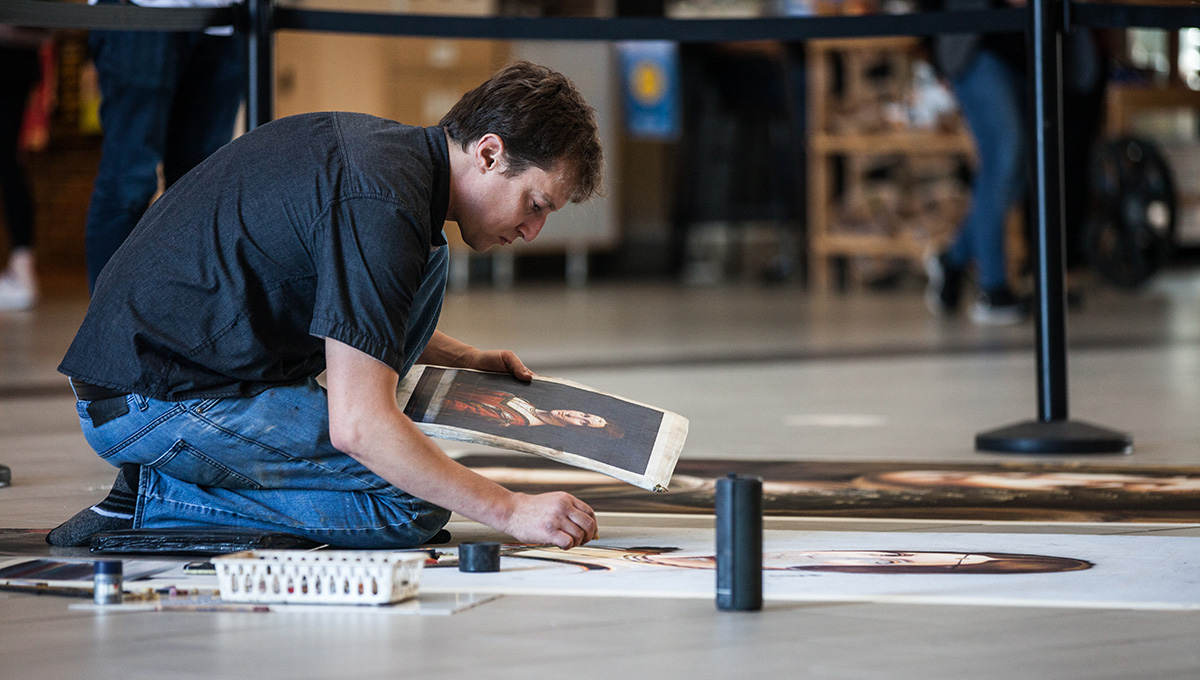
Ottawa’s modern-day Madonarro, Francois Pelletier, re-creating Leonardo’s portrait of Lucrezia Crivelli.
Today, Madonarri have access to art supplies like pastels that allow them to make even more faithful reproductions, and their work is celebrated at festivals in Europe, North America and Australia.
As part of Cinquecento – Carleton University’s year-long celebration of the life and work of Leonardo da Vinci — Ottawa’s own modern-day Madonarro, Francois Pelletier, is re-creating Leonardo’s portrait of Lucrezia Crivelli in the Galleria on the fourth floor of the University Centre. From September 18 to 20, Pelletier is working with pastels on a canvas that was specially prepared to mimic the texture of a sidewalk.
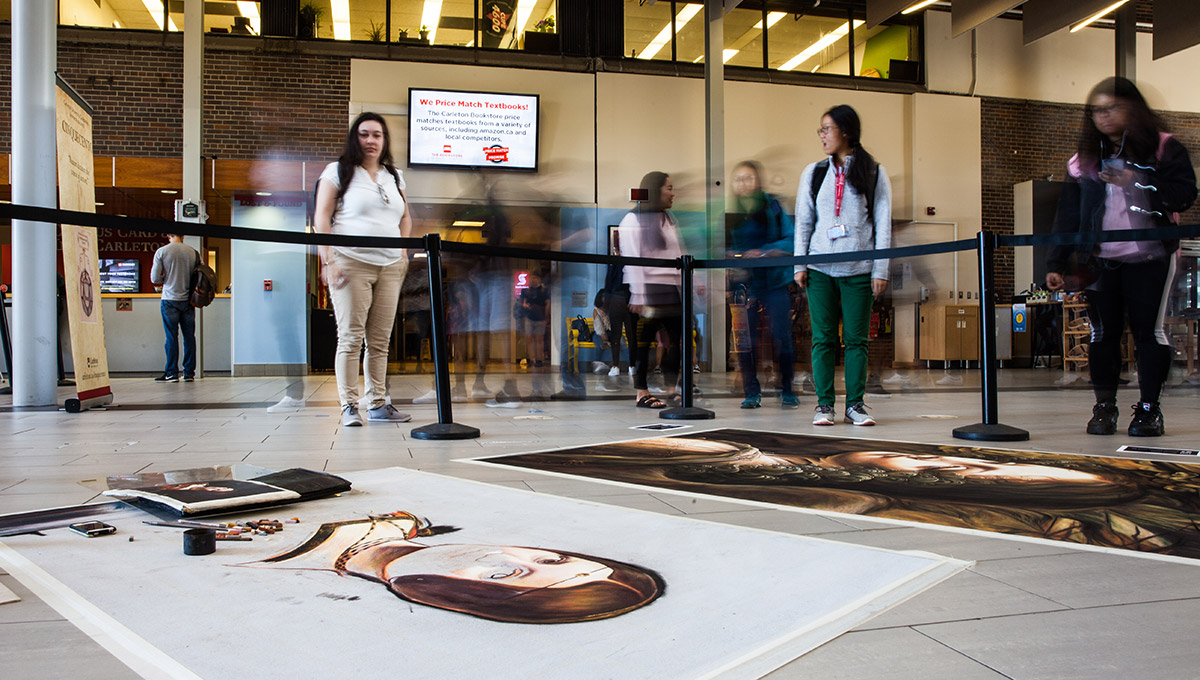
Re-creating Renaissance Masterpieces
He began making street art in Ottawa’s Byward Market in the late 1990s, and has been working as a Madonarro ever since. During the summer months, he travels to festivals in Europe, and during our winter, he heads to Australia, where the southern summer is more suitable for outdoor artistic pursuits. In between, he does commissions like this one. He has re-created Caravaggio paintings for Canada’s National Gallery of Art, and album art for well-known musical acts like Pearl Jam.
Pelletier estimates that he’s recreated the portrait of Lucrezia Crivelli at least 10 times over the years, and he’s studied the original work closely.
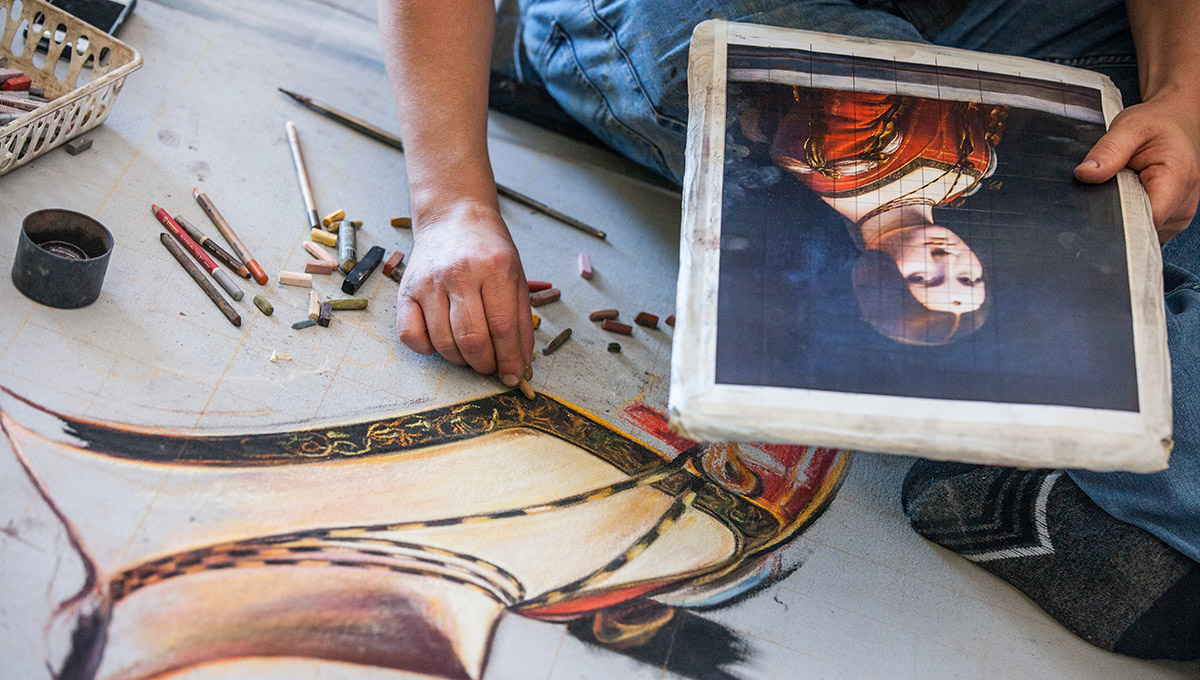
Pelletier spent a season working in the square outside of Centre Pompidou in Paris, the city’s major modern and contemporary art museum. During his time there, he’d head to the Louvre to study the classical works to reproduce. Masses of tourists crowded in to see the Mona Lisa, but mostly ignored the portrait Lucrezia Crivelli. This meant that Pelletier could study the painting, which is believed to portray a mistress of the Duke of Milan.
“Leonardo used the sfumato technique to blend colors together at if they are a mist,” he says.
“Pastels allow us to do those effects really well — especially on sidewalks.”

“Talking to people is a big part of it — to teach people what you’re doing”
But the marble floors at the University Centre aren’t as conducive to sfumato, so Pelletier is using a canvas with a texture that he compares to sandpaper.
“Sidewalks are porous, and you can actually mix chalk and pastels when you work on them. On the canvas, I can do very similar techniques, but it is more precise and laborious to achieve the same result. It takes a bit more time.”
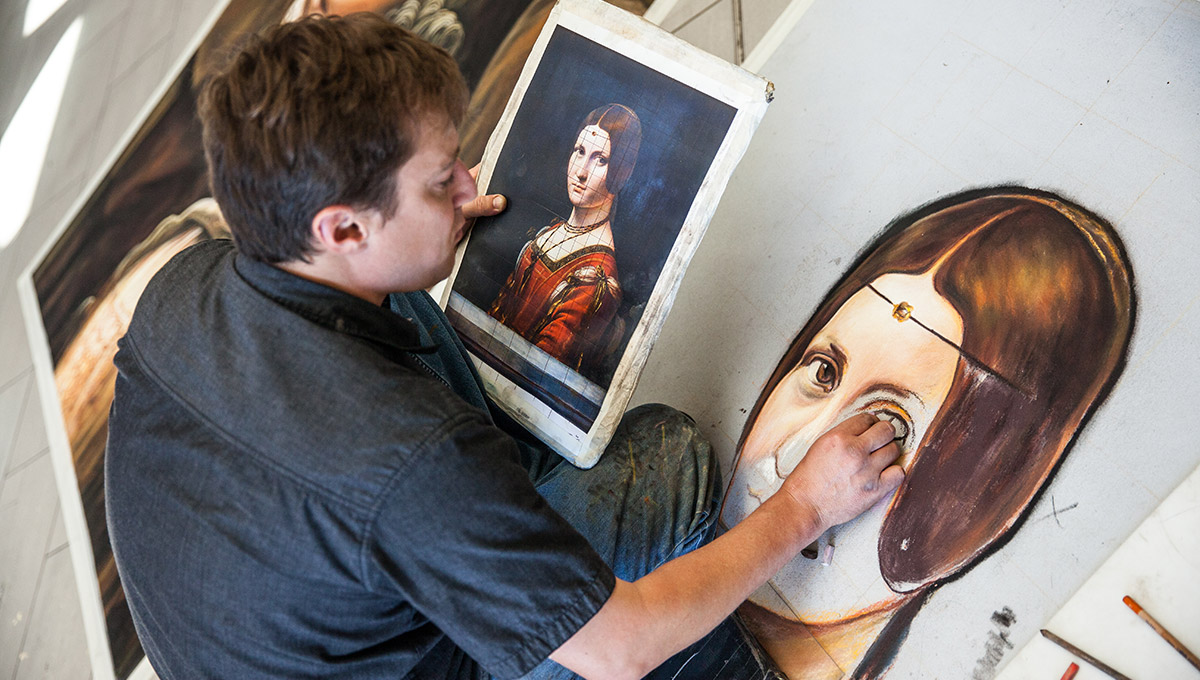
It will take three days for Pelletier to complete the portrait, and he invites the Carleton community to come to the University Centre and observe the creative process.
“Talking to people is a big part of it — to teach people what you’re doing,” says Pelletier.
“I’ve always enjoyed reproducing classical masters directly on the pavement, in public places. In cities, you always work in a place where there are enough passersby to make money. People want to take pictures and appreciate the art. Because Madonarri is busking – it’s a public performance.”
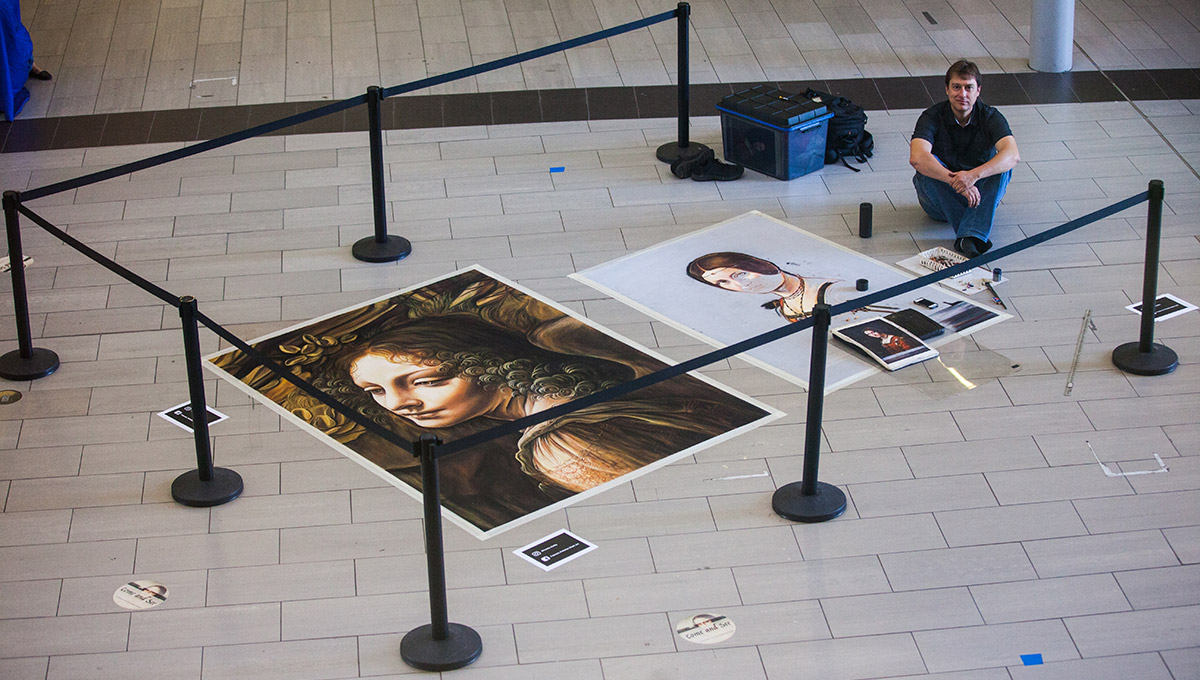
Thursday, September 19, 2019 in Faculty of Science
Share: Twitter, Facebook



